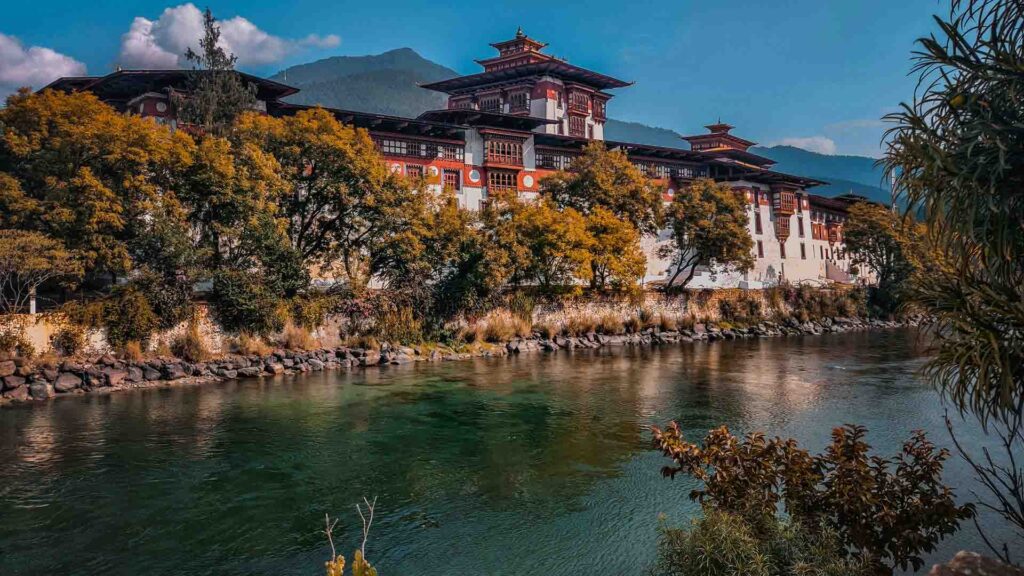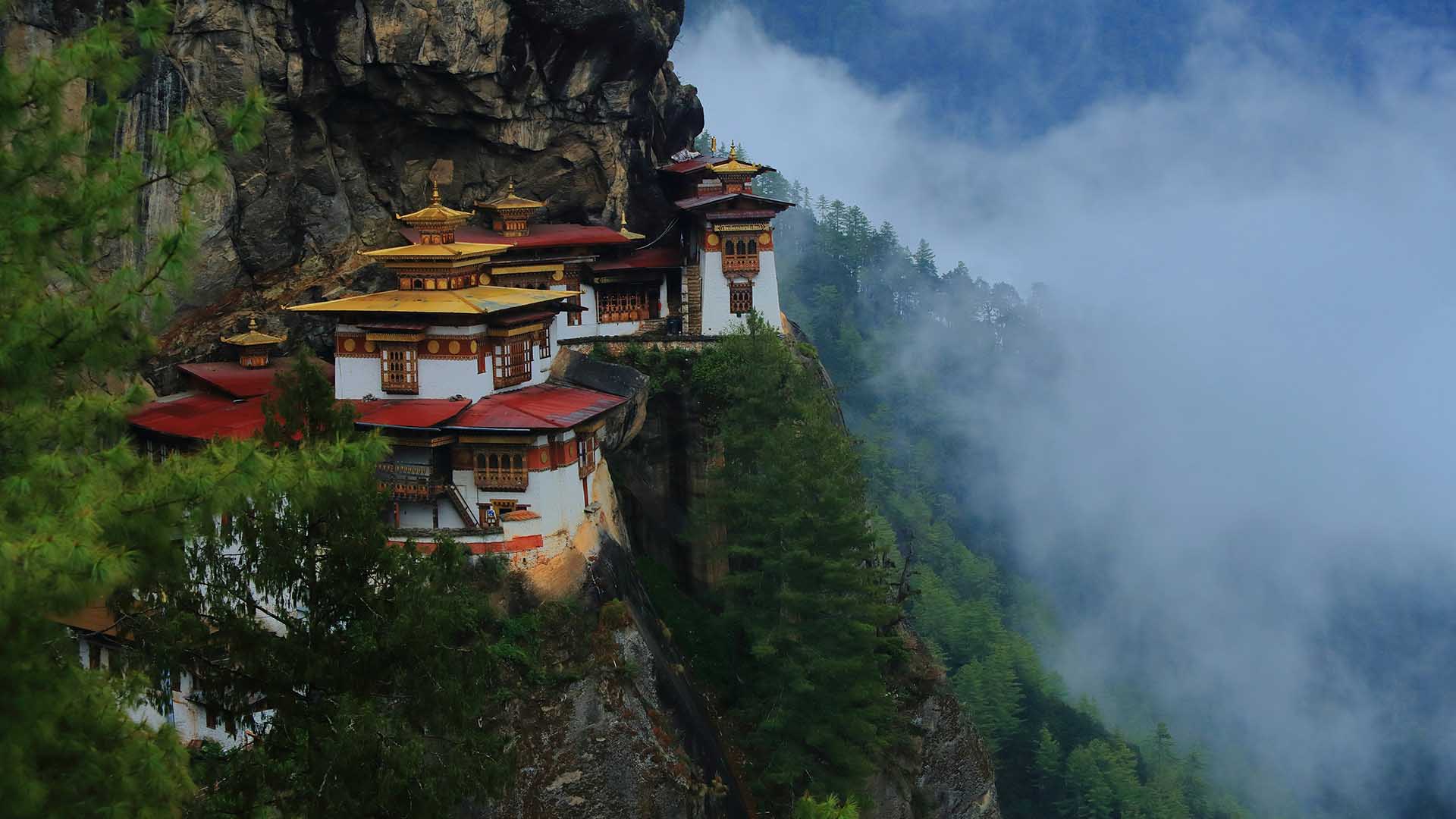01 Aug Punakha Dzong
Punakha Dzong, also known as Pungthang Dewa Chhenbi Phodrang (“the palace of great happiness or bliss”), is a historic fortress and monastery located in Punakha, Bhutan. Built by Ngawang Namgyal, the 1st Zhabdrung Rinpoche, in 1637–38, it is the second oldest and second-largest dzong in Bhutan, renowned for its majestic architecture. The dzong houses sacred relics of the southern Drukpa Lineage of the Kagyu school of Tibetan Buddhism, including the Rangjung Kharsapani and the remains of Ngawang Namgyal and the tertön Pema Lingpa.

Geography
Situated at the confluence of the Pho Chhu (Male) and Mo Chhu (Female) rivers in the Punakha valley, the dzong is surrounded by lush landscapes. The Mo Chhu originates from the northern hills of Lighsi and Laya, while the Pho Chhu is fed by glaciers in the Lunana region. Together, these rivers merge to form the Puna Tsang Chhu (Sankosh River), which eventually flows into the Brahmaputra River. Punakha’s moderate altitude of 1,200 meters makes it a favorable location for visitors, avoiding altitude sickness issues found in higher areas like Paro Taktsang. The dzong is also close to the Punakha Suspension Bridge and Chimi Lhakhang, the Divine Madman’s fertility temple.
History
Legend has it that the dzong’s design was inspired by a dream of the architect Zowe Palep, who envisioned a palace for Guru Rinpoche. Ngawang Namgyal commissioned the dzong’s construction, which began in 1637 and was completed in 1638. The dzong was originally named Pungthang Dechen Phodrang and became the seat of Bhutan’s government until 1955 when the capital was moved to Thimphu. Notably, in 1907, the dzong was the site of the coronation of Sir Ugyen Wangchuck as the first Druk Gyalpo (King of Bhutan). The dzong has been damaged by fires and earthquakes over the years, including a major fire in 1986. It was extensively restored with the help of the Indian government and consecrated in 2004.
Architecture
Punakha Dzong is a six-storied structure with a central tower, or utse, situated at an elevation of 1,200 meters. The dzong, built from compacted earth, stones, and timber, is an embodiment of Buddhist values and was one of the 16 dzongs constructed by Ngawang Namgyal. It measures 180 meters in length and 72 meters in width, featuring three courtyards. The dzong’s defensive features include a steep wooden draw stairway and a heavy wooden door.
Interior Buildings
The dzong’s first courtyard houses administrative offices, a large white-washed stupa, and a chapel dedicated to the queen of the nāgas. The second courtyard contains residential quarters for monks and historic halls related to the royalty. The third courtyard preserves the remains of Pema Lingpa and Ngawang Namgyal, including the well-preserved embalmed body of Zhabdrung in Machey Lakhang. Restoration works have added new Lhakhangs, religious images, and treasures.
Festivals
Punakha Dzong is renowned for its annual Domche festival, held in February/March. The festival features impressive displays, including a re-enactment of the Tibetan invasion of Bhutan in 1639 and a dramatic mock throwing of a relic into the Mo Chhu river. The final day includes a dance performance by 136 people dressed as warriors and rituals such as the Lhenkey Dungchhur, a worship for departed souls.
Notable Events
The dzong has been the venue for the coronation of all Bhutanese kings and was recently celebrated for its restoration and the 100th anniversary of the Wangchuck monarchy in 2008. A memorial honoring victims of the 1994 flash floods has also been erected near the dzong.


Sorry, the comment form is closed at this time.